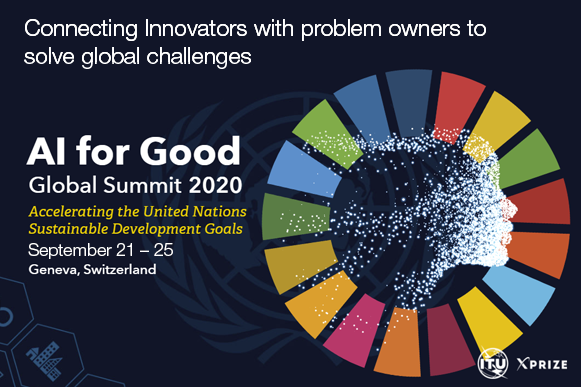
Our core values
Sustainability
through
automation.
Streamlining the compliance lifecycle to
support continuous improvement.
Sustainability is a critical imperative for us all.
Trax was founded to actively seek scalable approaches to achieve a net-zero built environment as quickly as possible. We aspire to have our compliance system be used to help companies, campuses, cities, regions, and entire countries to design and manage their Net Zero Roadmaps to completion.
Our approach is standardization to enable automation. We believe that sustainability is not a technical problem any more. It is now a question of proactive planning and applying known solutions en masse. But without automation, our window of opportunity will have passed.
And this is the right time for this approach. In the Architecture, Engineering, Construction, and Operations (AECO) Industry, standardization has now taken hold. Starting with building codes and by-laws, we believe the industry is ready to adopt performance-based codes and voluntary standards to help them achieve a leap forward in the performance of their business and their assets.
PHOTO BY LYCS ARCHITECTURE ON UNSPLASH
Companies
As many companies commit to greater transparency and effectiveness in their sustainability efforts, the value of integrating metrics and reporting into corporate systems and subsystems increases exponentially. As the SDGs are quickly being adopted by many companies in their Corporate Responsibility Reports, we believe this will be the most effective doorway to supercharging sustainability efforts.
PHOTO BY ABIGAIL KEENAN ON UNSPLASH
Cities
Cities face many challenges but also need to become the locus of sustainability. In new reports from the University of Leeds, Arup, and C40 Cities, the Future of Urban Consumption is reviewed. Also, the importance of Food-related Consumption is highlighted. We believe that the automation of some reporting processes can help cities significantly accelerate their progress and their planning for further improvements.
PHOTO BY PLANETSAT GLOBAL
Countries
Since the submission of the first Voluntary National Reviews of the SDGs in 2016, 172 countries have participated. However, reports are not annual and only 47 countries participated in 2019. Opportunities to streamline reporting were surfaced including collaboration and goals with high levels of interaction. National development plans have started to reflect the SDGs. To overcome challenges, harnessing innovation and enabling platforms are mentioned as well, aligning with our Trax mission.
Trax was to proud sponsor the inaugural AI for Good Global Summit in 2020
What better way to align ourselves with a global mission to use computation for humanity than to sponsor the first AI for Good Global Summit, launched by ITU at the United Nations in Geneva, Switzerland. In this way Trax helped to launch a series of global conversations around the most pressing challenges in history. We were proud to participate in the summit and look forward to future initiatives to accelerate sustainability.
Connecting AI Innovators with problem owners to solve global challenges
We have less than 10 years to solve the SDGs and AI holds great promise. The AI for Good Global Summit is THE leading action-oriented, global & inclusive United Nations platform on AI. The Summit is organized by the ITU with XPRIZE Foundation, in partnership with UN Sister agencies, Switzerland and ACM.
A Personal Note from our CEO
Shared Responsibility (SDG Goal 12)
What if we had a circular economy, and we didn't need to take more non-renewable resources from the environment?
What if all buildings were net-zero, or even net-positive, generating energy instead of consuming it; and could even grow our food with vertical farming?
What if people stopped eating animals and could just grow their own food?
These are the questions I’ve been asking myself and others since 1984. At that time, I saw a documentary series called “A Planet for the Taking” by David Suzuki on the CBC (Canadian Broadcasting Corporation). It showed the unbelievable drive of people to consume everything, the horrific treatment of animals, and the unchecked spread of destruction without any ethical thought or consideration. It was – and is still – clear to me that this state of affairs is completely unnecessary and that we can fix this. I believe the key to successfully turning things around is for everyone to have a deep feeling of shared responsibility.
A Perfect World
City of impossible foods, text: Tom Jenkins, photography: Alanna Hale, (2019, December). n magazine, Norwegian Airlines, pp. 70-80.
Of course “saving the world” is a complicated endeavor, but a worthy one. To better understand the priorities in addressing critical global challenges, the United Nations has developed a number of studies. Quoting from a book chapter I co-authored: “Problematic human impact on natural systems has been examined by the United Nations Environment Programme (UNEP) Sustainable Consumption and Production Branch [Assessing the Environmental Impacts of Consumption and Production: Priority Products and Materials]. This group works to define metrics to better understand the current global resource imbalance between consumption and production and its potential cost to environmental stability.”
Three dangers are specifically called out as primary factors to consider: Global Warming Potential, Land Use Competition, and Human Toxicity. Within these factors, ten categories of resource use are defined: plastics, coal, natural gas, crude oil, biomass, animal products, crops, iron and steel, other metals, and minerals. While each of the three factors has its own dominant problem category, a combined value reflects how these factors affect the environment. To help support decision-making, a weight is chosen for each category based on its overall estimated environmental impact, resulting in one general environmental footprint, expressed as an Environmentally-weighted Material Consumption indicator.
Environmentally-weighted Material Consumption indicator
Environmental damage indicators as reported by the United Nations Environment Programme (UNEP) Sustainable Consumption and Production Branch.
Our environmental footprint, caused by material consumption expressed by this indicator, is led by Animal Products (34.5%), Crops (18.6%), and Coal (14.8%). Animal Products stand out as the primary global environmental problem, larger than Crops and Coal combined, because of the massive amounts of resources that are consumed in producing the 294.7 million metric tons of meat from (roughly) 58 billion land and aquatic animals that are killed each year for food. This consumes a large portion of the global water and food supply as well.
Animal products are, by far, the greatest environmental problem and I encourage everyone to “put your money where your mouth is” and accept the shared responsibility for this dominant part of the climate crisis. Please always choose plant-based foods.
Typically, the destruction of the complete environment is not discussed in the popular press. More commonly, air pollution is mentioned, expressed as CO2e (equivalent amounts of greenhouse gases to CO2 with respect to global warming potential). If we focus on just the destruction of the atmosphere, air pollution is dominated by burning coal, oil, and gas for the primary purpose of heating and cooling buildings, and generating hot water in buildings (commercial and residential, equally). In this subsection of the environment, Animal Products is the second largest cause of destruction and Buildings are the biggest culprit.
This brings us to the need for Sustainable Cities and Communities (SDG Goal 11). This has been the focus of my work for the past decade (since 2010). I was inspired by a picture I saw of the first net-zero public building in Denmark called the Green Lighthouse; a student and faculty center at the University of Copenhagen. It showed the complex activities and interacting subsystems that need to be considered to make sustainable buildings.
The Green Lighthouse: the first net-zero public building in Denmark
Green Lighthouse diagram of low-energy techniques, such as natural ventilation, heating, and cooling, together with depiction of occupants and environmental conditions. (Christensen og Co. Arkitekter A/S, Green Lighthouse, University of Copenhagen, 2009).
Since that time, we have developed many solutions and technologies to address the building efficiency problem. Over the past 10 years, I have had the privilege to work with a great team of researchers, software developers, architects, and engineers to develop a number of software systems, prototypes, and concepts that can help us to transform the built environment from the problematic polluter it is today, to the climate cure it can become.
Now, together with my co-founders, I’m excited to start taking this strong body of research into action, working with the broader global community, to accelerate our journey to sustainability.
— Azam Khan, February 2, 2020
Trax is developing digital tools to automate the sustainability process. We are proud to be supporting clean, renewable energy with Bullfrog Power, offsetting more than 100% of our electricity consumption and moreover, our energy footprint is 100% emissions-free.
About Bullfrog Power
Bullfrog Power, Canada’s leading green energy provider, offers renewable energy solutions that enable homes and businesses to reduce their environmental impact, support the development of green energy projects in Canada and help create a cleaner, healthier world. As a Certified B Corporation, Bullfrog Power meets higher standards of social and environmental performance, transparency, and accountability. Thousands of Canadian homes and businesses are doing their part to address climate change and air pollution by switching to green energy with Bullfrog Power. Homes and businesses can sign up easily, quickly and affordably at www.bullfrogpower.com.
Join the bullfrogpowered community online — follow on Twitter (@bullfrogpower), and like on Facebook (facebook.com/BullfrogPower).








